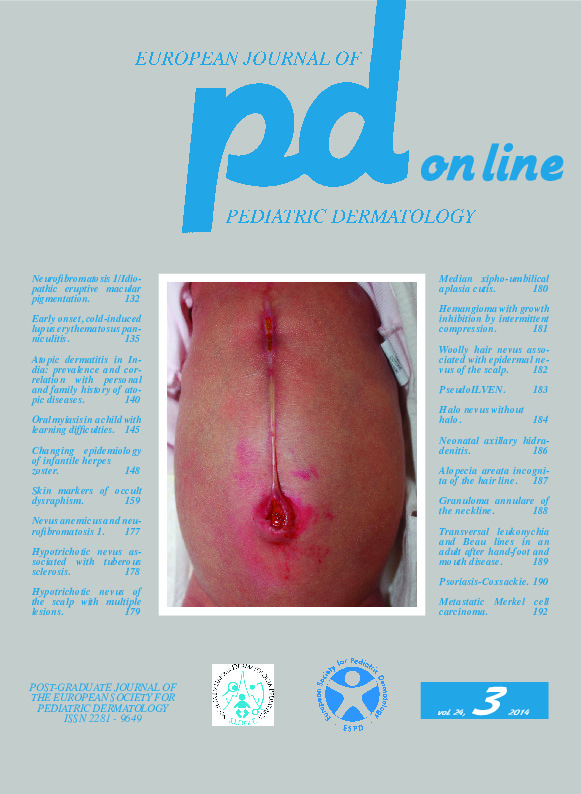Skin markers of occult dysraphism.
Downloads
How to Cite
Bonifazi E., Milano A. 2014. Skin markers of occult dysraphism. Eur. J. Pediat. Dermatol. 24 (3):159 -76.
pp. 159 - 176
Abstract
The occult dysraphism, due to a lack of fusion in the midline of mesenchymal and/or neural structures, is a frequent problem usually devoid of pathological significance but in rare cases associated with severe neurological manifestations sometimes incompatible with life. In 50% of cases of occult dysraphism there is a skin marker that facilitates its early recognition. The coexistence of cutaneous and neurological signs is due to the common ectodermal origin of the two tissues. Over the past eight years we observed 19 cases (9 M) of dysraphism. In 12 cases (8 M) of cranial dysraphism the most common skin marker is a collar or a tuft of thicker and darker hair, which often hides a plaque of ectopic meningeal tissue or a dermal sinus. In 7 cases (2 M) of spinal dysraphism the most significant skin marker is lipoma, but many skin signs seemingly trivial when are located in the midline, can be a clue to the diagnosis of a spinal dysraphism, especially if two or more than two. These include a flat vascular lesion that has features overlapping the very frequent infantile salmon patch.Keywords
Dysraphism, Hair collar, Lipoma, Dermal sinus, Tail, Tethered cord syndrome, Salmon patch

